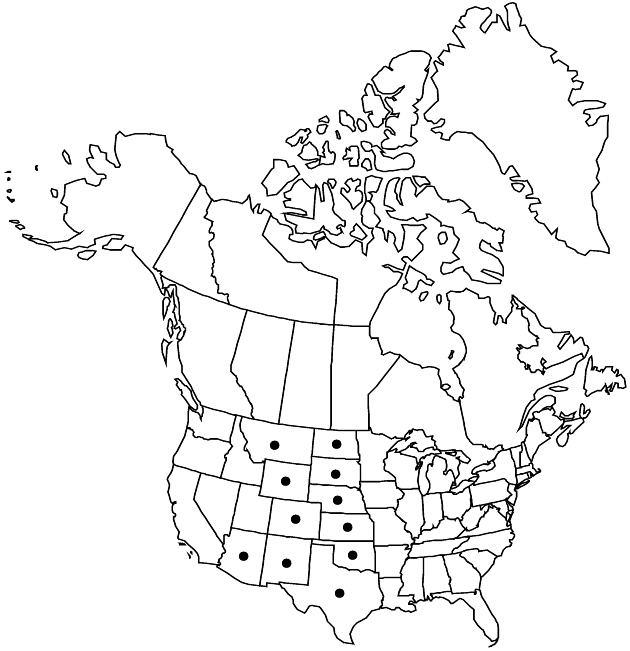Picradeniopsis oppositifolia
in N. L. Britton, Man. Fl. N. States, 1008. 1901.
IllustratedEndemic
Basionym: Trichophyllum oppositifolium Nuttall Gen. N. Amer. Pl. 2: 167. 1818
Synonyms: Bahia oppositifolia (Nuttall) de Candolle
Treatment appears in FNA Volume 21. Treatment on page 385.
Plants ± erect or spreading, 3–15(–20+) cm. Leaf lobes lanceolate to linear, 10–25+ × 1–3(–8) mm, faces ± canescent-scabrellous and gland-dotted. Involucres broadly turbinate to hemispheric, 5–6+ × 6–9+ mm. Ray florets 3–5(–6); corollas pale yellow, laminae 3–5 mm. Disc florets 30–60+; corollas 3.5–5 mm. Cypselae 3–5 mm, usually gland-dotted, seldom hirsutulous; pappus scales usually ovate or elliptic to obovate, sometimes lanceolate, 0.5–1.5 mm. 2n = 48.
Phenology: Flowering Jun–Oct.
Habitat: Roadsides, saline flats, shale sites
Elevation: 900–2500 m
Distribution
Loading map...

Ariz., Colo., Kans., Mont., Nebr., N.Mex., N.Dak., Okla., S.Dak., Tex., Wyo.
Discussion
Selected References
None.
Lower Taxa
None.
